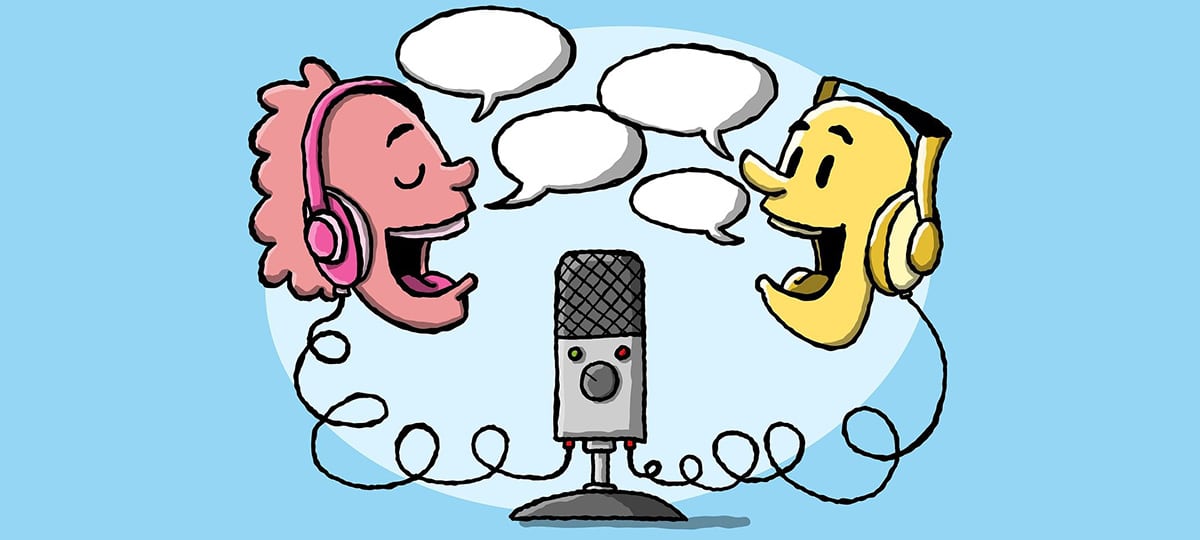First things first:
- Dialogue is action – it drives the story, shows characters and creates suspense.
- Each character has an intention – conflicts arise when their goals collide.
- Fears, secrets and lies make conversations multi-layered and emotionally believable.
- Subtext is the unsaid – good dialogues reveal more than they say.
- Revision is a must – speed, silence, choice of words and punctuation determine whether your dialogue comes across as lively.
Introduction: When dialogues come alive
Good dialogues are much more than spoken words. They tell plot, reveal character traits and let us dive deep into the world of a story. A successful dialogue seems easy and natural – and yet it is the result of many conscious decisions.
In everyday life, people talk without a goal, jumping from topic to topic. That can’t happen in a novel. Every dialogue has a function: it should advance the plot, show relationships or build tension. Dialogues that don’t contribute anything should be summarized or deleted – a scene needs conflict or emotion, otherwise it slows you down. “Dialogues do not reflect reality” is therefore one of the most important writing rules. They form a literary reality in which every word fulfils a function – information, conflict or propulsion.
Grammar basics – craft before art
Before you work on subtext and emotions, the craft should be right. There are clear basic rules, laid down by the Duden:
- No point in Inquitformel:
“The horse eats grass,” he said.
The period is omitted if an accompanying clause follows. - Questions and exclamation marks remain:
“Does the horse eat grass?” she asked.
“What horse eats grass?” He looked at her. - Interruptions:
“Well,” she interjected, “my horses always eat that.”
After the inquit formula there is a comma, then the speech continues.
These rules are routine and give you security. Thoughts are usually not put in quotation marks in fiction – this prevents confusion with literal speech. If the punctuation is natural, you can concentrate fully on content and rhythm.
The function of the dialog
A dialogue is part of the plot, not a decorative accessory. It fulfils several tasks:
- He expands, deepens and intensifies the plot.
- He reveals characters – their thoughts, opinions, attitudes and their history.
- It can even influence the genre : short, edgy dialogues create pace in the thriller, finely nuanced undertones characterize romance or coming-of-age novels.
So before you write a scene, ask yourself: Why are these characters talking to each other – and what changes as a result? If a dialogue does not provide any new information, does not show any conflict and does not advance the plot, it belongs in the summary – or out.
Element 1: Intentions and conflicts – the heart of every conversation
Every dialogue begins with an intention. Because every character wants something – consciously or unconsciously. Perhaps it wants to convince, provoke, protect or justify itself.
Tension arises when these intentions collide. As soon as the goals differ, conflict arises – and only this makes dialogues lively.
For each figure, consider:
- What does she want to achieve in this scene?
- What attitude does she bring to the table?
- Is there a contrast to the intention of the other character?
If the conflict is not strong enough, make it bigger. Let the characters rub against each other instead of agreeing with each other.
There are different types of conflict that work in dialogues:
- External conflict: open opposites/dispute of opinion.
- Inner conflict: Character wrestles with himself, you can hear between the lines.
- Subliminal tension: Polite surface, hidden agenda.
A “groovy dialogue” arises where emotions are bubbling under the surface. You can increase conflicts by using the following means:
- Secrets (who from whom)
- Lies (who in front of whom)
- Fears (of what)
- Relationships with each other
- Shared past (backstory)
- Drastic experiences between characters
- Hopes (for love, success, etc.)
Element 2: Fear, Secrets and Lies – Suspense from the Hidden
People never talk completely freely. Not even your characters. They are afraid – of punishment, of exposure, of rejection or of losing face. These fears color every line, every tone of voice.
For each character, determine:
- What is she afraid of?
- What secret does she carry?
- To whom is she lying – and why?
If you like, draw a character network or a character mind map: Who is in which relationship to whom? Who owes whom something, who hides what? This way you can see where conflicts can arise. The clearer you know fears, secrets and hopes, the stronger the tension in your dialogues will be.
Exercise: Plan a small turning point in the conversation per scene – the moment when the balance of power shifts and fear becomes visible.
Element 3: Subtext – the unsaid between the lines
The subtext is that which is not said, but is meant . One character says, “Have a nice evening,” but says, “I want you to stay.” Subtext is created by nuances, gestures, pauses or the silence between words.
An exercise on this:
Take an existing dialogue and mark what is really being said – and what is actually meant. If nothing resonates, rewrite it so that more happens beneath the surface. A good dialogue reveals what a character is thinking, precisely because he or she does not say it. If there is no subtext, rewrite the scene so that something is said, but it is clear that something different is meant than what is written there. However, this is not always possible.
Exercise: Creative Writing
Grab your current dialogue and open any novel on page 99. Choose the sentence that spontaneously “jumps out” at you. Write down this sentence and incorporate it into your dialogue in a way that makes it seem natural and meaningful—as if it’s always been part of the scene. This method forces you to rethink the rhythm of speech, topic and emotion and helps to break up entrenched dialogue patterns.
Fine-tuning: tempo, silence and linguistic variation
When the scene is set, the fine work begins. Check your narrative pace:
- Short sentences and exchanges of words create dynamism.
- Pauses, silence and descriptions bring calm.
Play with silence – often a reaction, a look or a gesture says more than five sentences. Also, vary your inquit formulas: “said”, “asked”, “interjected” – or replace them with action (“He leaned forward”, “She raised her eyebrow”). Be sure to delete adverbs if they are superfluous. Filler words seem realistic, but only sparingly dosed – otherwise they slow down the flow of reading. And use pictures or comparisons, but only if they fit the character. At the very end, the shortening follows: Every strong dialogue is created by multiple revisions. If a scene only ‘sounds nice’ but doesn’t change anything: merge or delete.
An exercise on this:
Write the scene only as a naked dialogue – without direction, without accompanying sentences. This way you can hear rhythm and tempo unfiltered and then fine-tune actions and pauses.
Practice: Refining Dialogue
Take a dialogue scene from your text and check it specifically:
- Is the narrative pace right? Or can you shorten to increase tension?
- Can you play with silence – i.e. use silence, looks or reactions instead of words?
- Vary your inquit formulas, use actions instead of repeated “said”.
- Delete superfluous adverbs, replace them with more precise verbs.
- Work with metaphors and comparisons if they fit the character – not an end in itself.
This fine work makes the difference between functional and sparkling dialogue.
Conclusion: Three elements for gripping dialogues
In the end, it all boils down to three central points:
- Competing intentions – characters want different things.
- Characterization through conflict – fears, secrets, motivations shape their language.
- Subtext – Readers understand what is meant even though it is not said.
If you combine these three levels, you create dialogues that carry the plot, reveal emotions and set the tone of an entire book. After all, good dialogues are the result of clear goals, deliberate conflicts and careful revision. Those who master these three levels transform their characters into living voices – and their manuscript into an experience that readers can’t let go of. We hope you enjoy revising your dialogues!
If you’re unsure or need some help polishing up your dialogues, we’ve prepared a checklist for you. Once you’ve worked through them step by step, your dialogues are ready to be published!
Sources:
- Bookerfly Author Camp Workshop with Annika Bühnemann, 07.05.2025.
- How to Write Lively Dialogues – Selfpublisher Association
- Writing dialogues: 7 professional tips for exciting scenes – Bookerfly
- Writing tip: Good dialogues – a promise to your readers
- Writing Dialogues: Structure, Tips & Examples
Do you like our magazine? Then sign up for our GRIN newsletter now!









